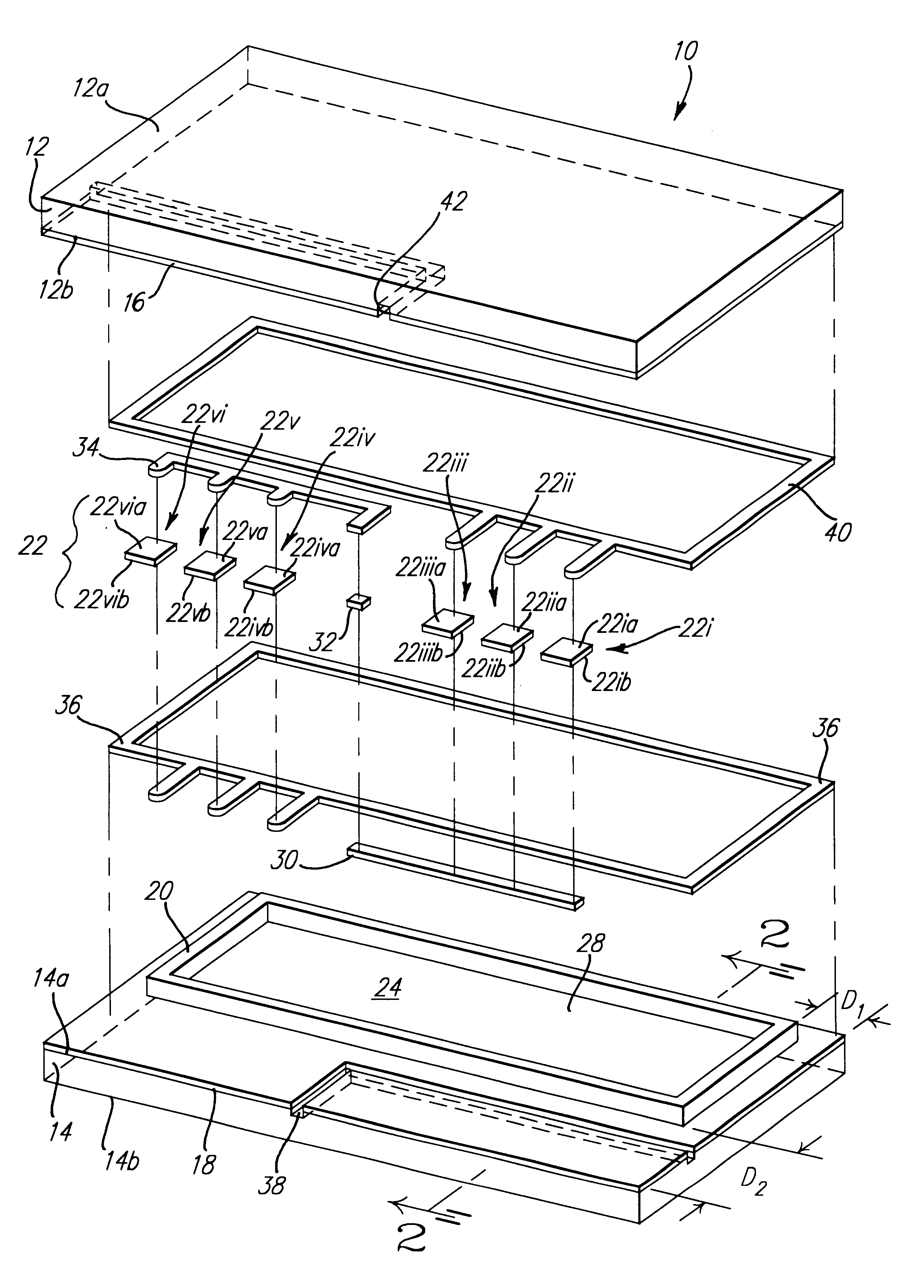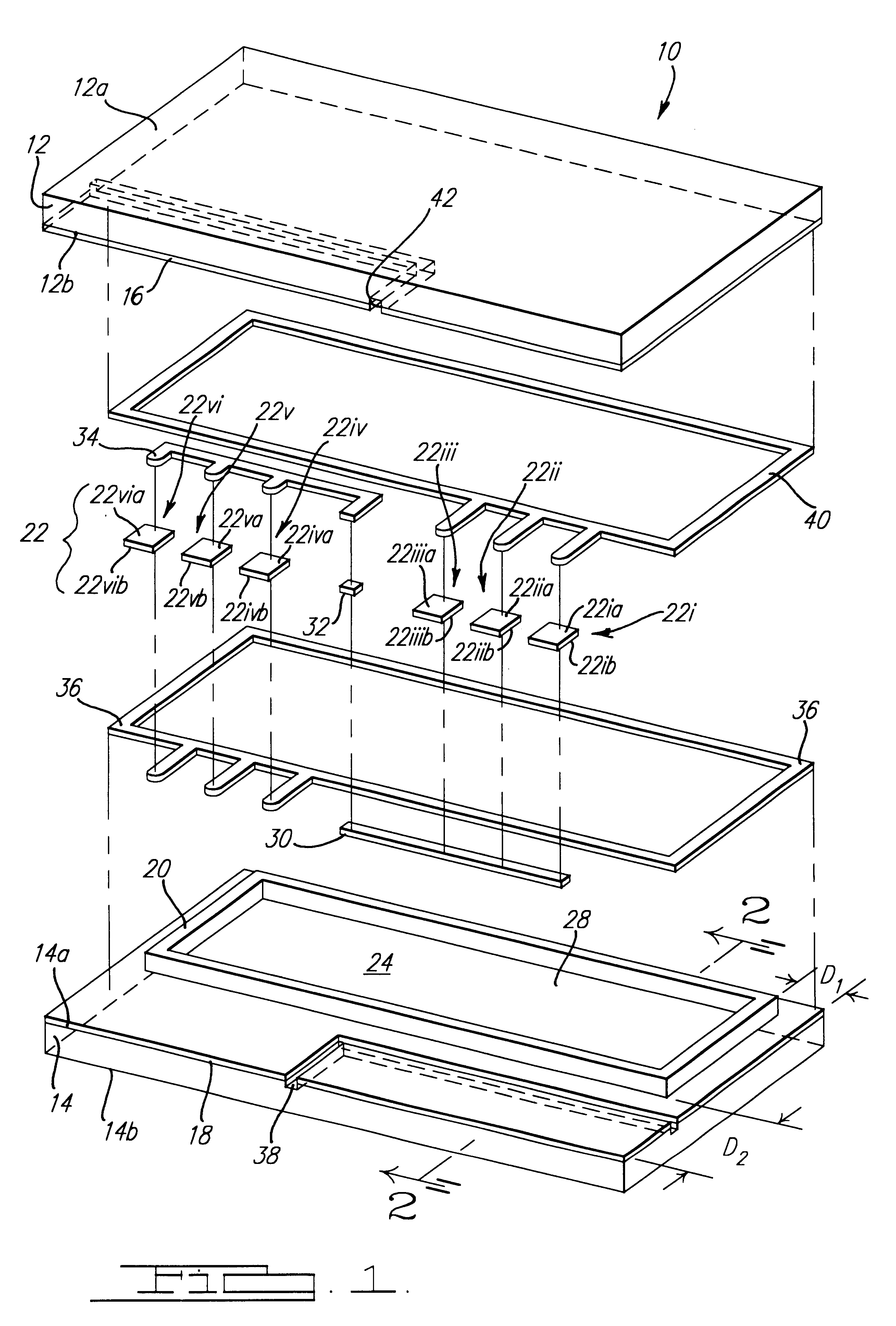Electro-optic device incorporating a discrete photovoltaic device and method and apparatus for making same
a photovoltaic device and optical technology, applied in the field of optical devices, can solve the problems of affecting the operation of the device, and drawing power, etc., and achieves the effect of reducing the number of optical devices
- Summary
- Abstract
- Description
- Claims
- Application Information
AI Technical Summary
Benefits of technology
Problems solved by technology
Method used
Image
Examples
example 2
Propylene carbonate was added to a reaction flask and deoxygenated with dry nitrogen. 20 weight percent of monomers were added to the reaction flask in the molar ratio of 1 part 2-hydroxyethyl methacrylate (HEMA) to 5 parts methyl methacrylate (MMA). The MMA was purified by through distillation at atmospheric pressure using a short neck distillation column. The HEMA was purified by distillation at approximately 3 mm-Hg using a short neck distillation column. The reaction flask was heated to 70 degrees Celsius and a free radical initiator (V-601{Dimethyl 2,2'-Azobis(2-methylpropionate)}(Dimethyl 2,2'-azobisisobutyrate) was added. When the viscosity of the resulting solution increased noticeably, more propylene carbonate (at reaction temperature) was added to the flask. The reaction was continued until completion with the resulting weight percent of the pre-polymer being 10 percent. The pre-polymer solution was diluted to 5% by weight with propylene carbonate. 30 millimolar of Tinuvin...
PUM
| Property | Measurement | Unit |
|---|---|---|
| sheet resistance | aaaaa | aaaaa |
| thickness | aaaaa | aaaaa |
| thickness | aaaaa | aaaaa |
Abstract
Description
Claims
Application Information
 Login to View More
Login to View More - R&D
- Intellectual Property
- Life Sciences
- Materials
- Tech Scout
- Unparalleled Data Quality
- Higher Quality Content
- 60% Fewer Hallucinations
Browse by: Latest US Patents, China's latest patents, Technical Efficacy Thesaurus, Application Domain, Technology Topic, Popular Technical Reports.
© 2025 PatSnap. All rights reserved.Legal|Privacy policy|Modern Slavery Act Transparency Statement|Sitemap|About US| Contact US: help@patsnap.com



